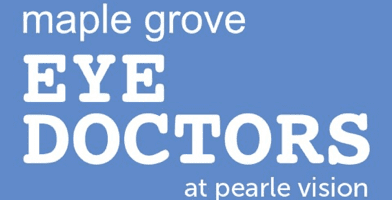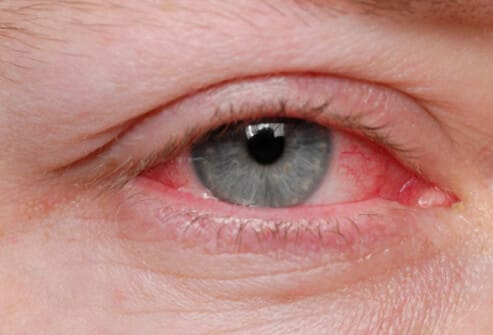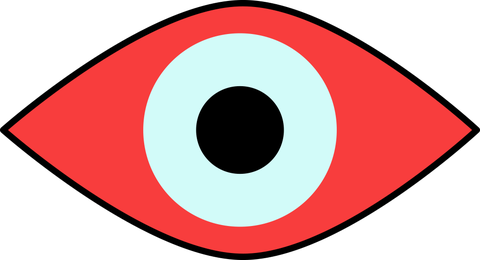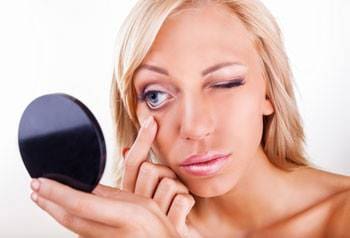Tell the truth: How often do you really pay attention to your eye health?
Basically only when you realize you have to squint to see the TV—or your contacts start hurting, right?
But—and bear with me while I sound like your mom for a sec—your eye health is something that you should absolutely be paying special attention to (you like to see, don’t you?).
Take changes in your vision, for example–floaters, blurriness, spots. Noticing those changes and getting them checked out early can be life-saving—and not just for your vision. They could be early signs of conditions like tumors, strokes, or even cancer—and yeah, you want to catch that stuff early.
That’s why our eyecare experts recommend a comprehensive eye exam every one to two years, even if you don’t need to update a prescription.
But even if you’re vigilant with your annual (or bi-annual) eye exams, weird things can pop up out of the blue that need special attention, according to our doctors.
If you experience any of these weird eye symptoms, get them checked out ASAP.
1. You’re seeing drifting cobwebs and flashes of light.
In the back chamber of the eyeball, there’s a part of the eye called the vitreous body, and it has the consistency of an egg white. As you age and that jelly becomes more liquid, it develops floaters, which often look like cobwebs or specks in your field of vision.
They’re typically harmless—you’ve probably experienced them once or twice—but if you notice a sudden increase in the number of floaters, you should see you eye doctor ASAP. That could mean your retina and the blood vessels in your eye have been torn. If you also see flashes of light, it could be a sign of retinal detachment, which could lead to blindness.
Depending on the location and size of the tear, doctors may treat it with laser or freezing treatments, inject a gas bubble into the eye to put the retina back into position, or have to operate on the eye.
2. Your eyes hurt or feel like they burn.
Inflammation or irritation is a main culprit here, which often results in that itching and burning sensation—and it’s typically a condition called blepharitis, which is caused by bacteria or microscopic mites that live on the eyelids (yes, really). Luckily, baby shampoo mixed with warm water is a quick fix!
Other possibilities include styes, infections, or a painful inflammation of the eyelid’s oil gland. Doctors will usually have you use compresses to let that pocket of inflammation—basically a “pimple of the eyelid”—drain. If it doesn’t drain on its own, surgery might be needed.
You could also have a “sunburn” on your eye, a condition called photokeratitis, from exposure to UV rays in the sun or artificial lights sources like tanning lamps. The condition is also called “snow blindness” if the sun reflected brightly off of a surface like sand, water, ice or snow. The condition usually goes away on its own, but doctors might prescribe eye drops if there’s a risk of infection.
3. Your eyes are extremely red or dry.
Redness means that your eye is irritated and its blood vessels have dilated, and it could be caused by a number of things: a chemical irritant like onions, or an allergic reaction (think: pollen or your mom’s cat).
Another cause could be dryness, when your eye doesn’t produce enough surface tears to stay lubricated. To suss things out yourself first, our docs usually recommend using eye lubrication or artificial tears (just avoid any OTC products that claim to “get the red out;” which usually only masks the problem)—if that does the trick, then you probably don’t need medical attention.
If not, it’s time to see your optometrist, who can check your tear production to see if you have chronic dry eye or an autoimmune disorder that needs a little more than just eyedrops.
4. You’ve got a new mole or freckle on your eye.
If you’ve always had a freckle on your eye, your doctor has probably mentioned it to you, but if a new one pops up, it should always be evaluated by an opthalmologist ASAP.
And that’s if you can see it—sometimes moles can be in the back of your eye that you’re not even aware about. The concern with moles is that they can potentially become malignant, to what’s called a melanoma.
It’s extremely rare, but definitely worth keeping tabs on. If a tumor or melanoma develops in the back of the eye, vision symptoms may soon show up, from blurred vision to a full-blown retinal detachment—which, again, signals you should see an eye doctor immediately.
5. You’re seeing double.
Double vision when both your eyes are open could mean that your muscles aren’t aligned properly. That may be due to a neurological problem—possibly even a brain tumor or stroke.
Having double vision in one eye, which is less common, can be due to a cataract or an issue related to the retina.
If it’s just a muscular issue, sometimes prisms can also temporarily be used in eyeglasses—they can help correct your vision by bending light to align the two images into one. There are also surgical approaches to correcting a muscular misalignment, Moroi said.
If there’s a neurological problem, usually your eye doctor will order an MRI or CAT scan. Other specialists and primary care physicians will almost certainly need to get involved.









